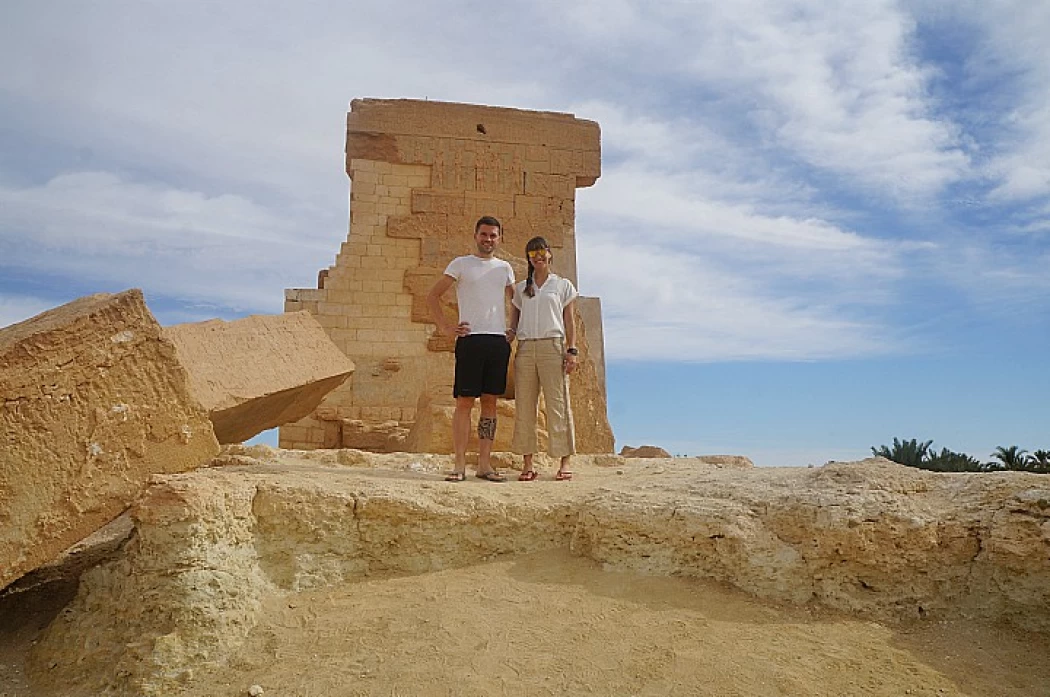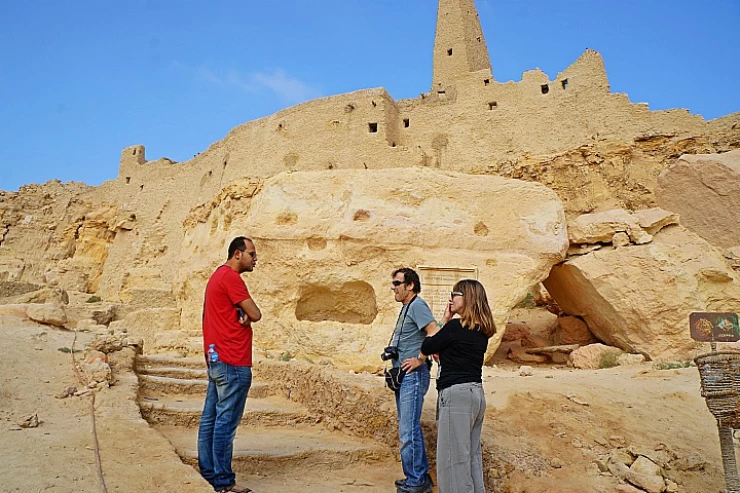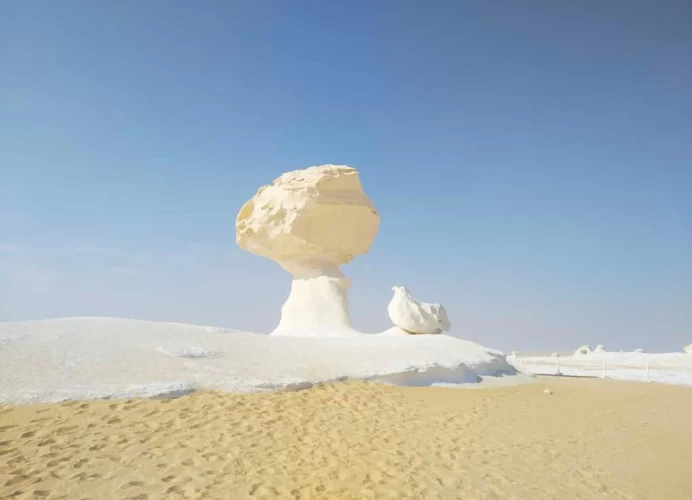
History of Temple of Amun Ra in Siwa Oasis | Um Ubaida Temple
The temple of Umm Obeida is one of the oldest, most important and oldest temples in the Siwa Oasis, built in the thirtieth dynasty by King nektanbo II, the temple is located 4 kilometers east of Siwa and is the Second Temple of the god Amun, and the name of Umm Obeida is likely a corruption of the name of the mother of the temple.
Temple inscriptions
At the top of the wall, a long text, consisting of 51 lines, is inscribed, and three rows of gods are depicted on the wall. In 1820 ad, this wall was in a much better condition than the current one, and if you compare the current photogravure images with the drawings of Khun minutuli, it is noticed that there is a frieze of decorations above the text, and at the top of the top of the wall repeats the inscription of the royal cartouche, which was protected by the gods, the elite depicted in the form of mercy, and at the bottom a number of people perform mouth-opening rituals, which are rarely found on the walls of temples, it is assumed that they are found on papyrus, coffins, or sometimes on the walls of tombs, as these texts associated with the burial ceremony, the ritual of opening the mouth is engraved in bas-relief and is in the top row, and at the top of the wall the builder of the temple and the ruler of Siwa at that time are watching Nektanpo II is kneeling in front of the god Amun, who is sitting inside his temple, and behind the ruler there are seven gods, and in the middle row there are nine gods, of which only eight remain, while only three gods remain from the bottom row, and in 1820 the wall held another number of images of the gods and in front of each god his name was engraved, and behind the god Amun-Ra, who is sitting in the upper row,
the latter, and the gods on the bottom row are likely to be: The drawings of Von Minutoli helped to know the greatest extent of the ancient temple before it was demolished by the sheriff, so the temple was surrounded by two walls and the surrounding wall was Square in design and large parts of the temple had already fallen, but the Holy of holies and the chamber that precedes it were still there.
The end of the temple
A large part of the Umm Ubaydah temple remained in good condition until the beginning of the nineteenth century. Still, in 1811 AD, it was the beginning of the end, as the temple was subjected to a strong earthquake that destroyed part of it. Between 1819 and 1821, travelers who went to the temple, such as travelers kayo, Drovetti and Von Meniotoli, noticed that some stone blocks had fallen from the roof and that one of the walls of the temple was prone to fall until 1897, when he handed over the police station and his own house. But the writer Baha Taher, the author of the novel "Sunset Oasis", completely denied any documented historical link between Mahmoud Azmi and the demolition of the temple, but it is a purely fictional event from the writer's imagination, stressing that Azmi was the warden of Siwa at this time only, without attributing to him that controversial incident.
Siwa is the westernmost Oasis in the Egyptian desert, only 30 kilometers far from the Libyan borders in the heart of the great sand sea.
The Temple of Amon or also known as the Temple of Umm Ubayd constructed during the 30th dynasty, only a wall decorated with bas-reliefs and a gigantic pile of ruins remains. The temple was built by Nectanebo II.
The Temple of Amun is one of the oldest temples in the world, it is located 4 kilometers east of the current city of Siwa during the reign of the Thirtieth Dynasty by "Nectanebo II"
Unfortunately, one of the high officials 1897 blew the temple up to use its stones to build a staircase for the police station and a house. All that remains are ruins of broken stones and inscriptions in the Greek language, mostly written by travelers in ancient times.
















